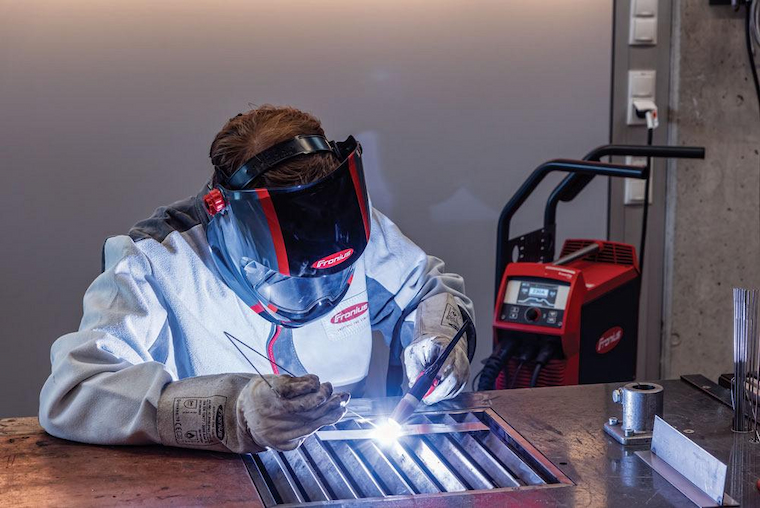Modern technological advances have resulted in significant changes in many industries. And the welding industry hasn’t been immune to the impact either. Thanks to a variety of innovations, the welders of today face reduced worksite risks and an improvement in their productivity.
The most notable example of this is the introduction of auto-darkening helmets. Although traditional helmets with fixed lenses still in use, auto-darkening units are now widely preferred for the majority of welding applications and processes. Here are the benefits of investing in an darkening welding helmet and how to choose the right one for you.
How Do Auto-Darkening Helmets Differ from the Traditional Ones

To understand the benefits of this type of protective gear, you need to know how it differs from the standard option. The traditional or so-called passive welding helmets feature a standard lens with a fixed shade of #10 is coated with UV and IF protection to shield from arc and glare. Because they don’t run on batteries, they will never fail you.
They do have a huge drawback, though: they are much more difficult to use, particularly for stick welding or SMAW work. You have to constantly adjust your position and flip the helmet, but this is a skill you can develop. Moreover, the filter provides the same level of protection regardless of the number of amps coming from the light when welding.
On the other hand, the auto-darkening option features sensor that detects light with filters and cells present in the viewing plane. This auto-adjusting approach enables the lens to automatically adapt from light to dark upon detection of light emissions from a welding machine.
Batteries or solar energy are used to power auto-darkening helmets. The sensors are able to identify an arc because it emits light, which causes the sensor to send a signal that activates liquid crystals, which darken and lighten the lens to the preset shade level based on light intensity.
The Benefits You Can Expect
Improved Visibility
Visibility is crucial in welding, as it directly impacts the quality and precision of the weld. Automatic darkening helmets offer superior visibility compared to their traditional counterparts. By automatically adjusting the lens shade according to the welding process, these helmets provide optimal visibility of the workpiece, electrode, and surrounding environment. Welders can maintain better control over their welds, resulting in improved accuracy and efficiency.
Increased Comfort
Comfort plays a significant role in the welding experience, especially during long hours of work. Automatic darkening helmets are designed with ergonomics and user comfort in mind. These helmets are typically lightweight and feature adjustable headgear for a customized fit.
Additionally, when welders repeatedly lift and lower the helmet, they experience neck strain and fatigue. With an automatic darkening welding helmet they don’t need to do this, allowing them to focus on their work with minimal distractions.
Versatility
Automatic darkening welding helmets are incredibly versatile, suitable for various welding processes, including MIG, TIG, and stick welding, as well as plasma cutting and grinding. With adjustable sensitivity and delay settings, welders can fine-tune the helmet’s response to their specific needs and working conditions. This versatility makes automatic darkening helmets a valuable investment for professional welders across different industries.
Cost Effectiveness
While automatic darkening welding helmets may have a higher upfront cost compared to traditional helmets, they offer long-term cost savings. By providing superior protection and visibility, these helmets can help prevent costly accidents and rework caused by poor weld quality. Additionally, their durability and advanced features contribute to extended lifespan, reducing the need for frequent replacements.
How to Choose One

Number of Sensors and Viewing Area
Basically, this comes down to personal preference: a smaller viewing area gives you a closer look at what you are working on; more sensors mean more coverage, which is advantageous when you are out of position and may be blocking a sensor.
Four sensors are usually enough for most jobs. A larger viewing area can give you greater peripheral vision and easier positioning, but it may also mean a heavier helmet.
Consider the Cost
Auto-darkening helmets are more expensive than passive ones. This difference in price is obviously caused by their unique features, such as convenience. Being on a tight budget does not always mean settling for less. Although the auto-darkening helmets are more expensive, their price ranges vary depending on the features they come with. Overall, though, passive helmets cost less.
Pick a Power Source
To ensure proper operation, auto-darkening welding helmets need either solar power or batteries. Take into account where you will get the power, such as where you will buy the batteries and how much they will cost, or where you will charge your solar-powered helmet—is there enough sunlight to fully charge the battery pack?
Make Sure It Meets Safety Standards
When purchasing a helmet, you should make sure complies with all the internationally recognised safety requirements. The primary purpose of helmets is to shield our eyes from the hazardous light produced during welding, and you don’t want to buy a fraudulent product that could put your health at risks. Both auto-darkening and passive welding helmets should meet the necessary standards.
















